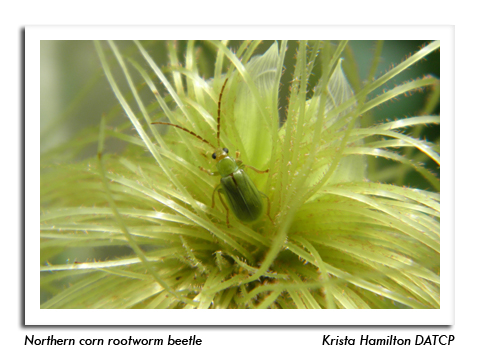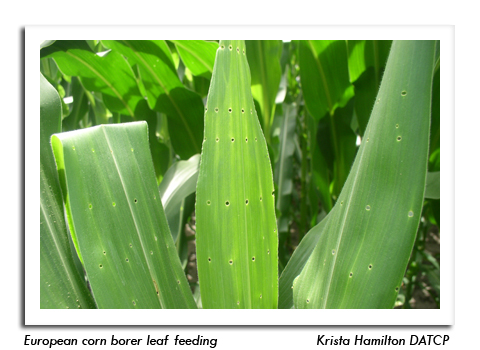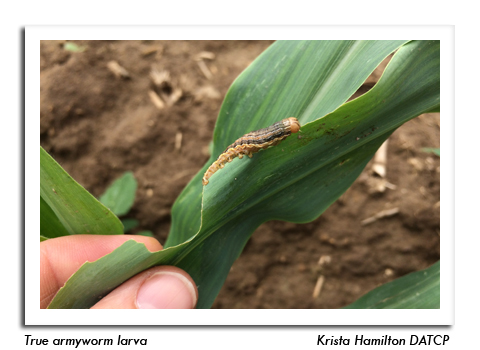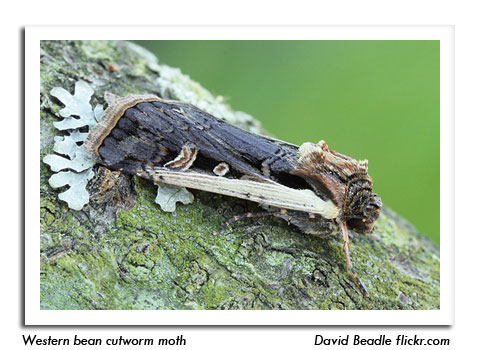
 |
|
|
Corn
Volume 64 Number 11 Date 07/11/2019 CORN ROOTWORM - Beetle emergence is beginning in southern Wisconsin. These insects will become increasingly noticeable throughout July, with peak emergence anticipated around mid-August. Two consecutive years of historically low beetle counts (2017-18) indicate that overall beetle pressure could be down again this season, although individual fields with root damage should still be expected. The state average of 0.2 beetle per plant recorded in both 2017 and 2018 was the lowest on record. Excessively wet soils throughout much of the state in June also may have impacted overwintered egg populations. EUROPEAN CORN BORER - Larval infestation rates are generally less than 5% in surveyed fields. Corn borer caterpillars range in development from second to fifth instar, with the third instar being the most prevalent stage. Only 5% of the cornfields sampled from July 4-10 had signs of ECB infestation. STALK BORER - Surveys of V9- VT corn found infestation rates of 1-16%, with the highest population noted in Richland County. Treatment is no longer an option for many southern and western Wisconsin fields since the larvae have bored into the stalks and unemerged tassels. Treatments must be applied from 1,400-1,700 degree days (base 41°F), or prior to the V7 stage. Stalk borer feeding is unlikely to kill individual corn plants beyond V7. TRUE ARMYWORM - Significant flights have ended at black light trap locations, but continued scouting of corn and wheat is recommended. Larvae from heavy moth flights (400-1,100 moths) in June should be noticeable soon and localized armyworm problems often develop in at least a few scattered corn and wheat fields in July. Field conditions remain very favorable for armyworm problems. WESTERN BEAN CUTWORM - Moth emergence began last week. Based on projected degree-day accumulations, 25% emergence of the moth population can be expected during the week of July 15-21 in the southern counties. A revised model developed by UNL and UMN entomologists shows that the optimal method for forecasting the western bean cutworm flight uses simple degree-day calculations beginning March 1, with a 38°F lower threshold and a 75°F upper threshold. The new cumulative flight model indicates that 25% of moth flight should be complete when 2,577 degree-days have accumulated. Scouting pretassel corn to estimate egg density is recommended at 25% moth emergence. -- Krista Hamilton, DATCP Entomologist 





|
|
|